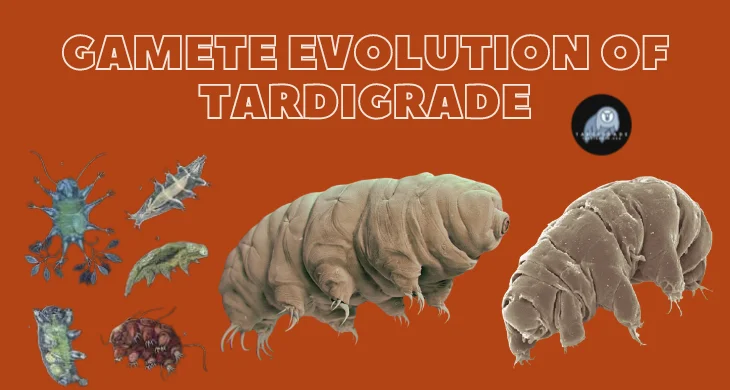Embark on a journey into the microscopic realm as we delve into the fascinating world of tardigrades and their gamete evolution. Explore the unique reproductive strategies of these resilient organisms, uncovering the secrets behind their ability to survive and thrive in diverse environments. From cryptobiosis to reproductive adaptations, discover the remarkable evolution that allows tardigrades to persist in the microscopic landscape.
Gamete Diversity
Tardigrades, often referred to as water bears, exhibit a fascinating array of gametes, including eggs and sperm, showcasing remarkable reproductive diversity. These microscopic organisms deploy various reproductive strategies, adapting to their environment’s challenges. From the production of eggs that withstand desiccation to the mobility of sperm for effective fertilization, tardigrades’ gamete diversity is a testament to their resilience. This unique range of reproductive mechanisms allows them to thrive in diverse habitats, emphasizing the intricate evolutionary adaptations that contribute to their survival in the microscopic world.
Cryptobiosis in Reproduction
Cryptobiosis, the state of suspended animation, serves as a dual-purpose phenomenon in tardigrade reproduction, extending beyond survival to play a crucial role in their reproductive cycle. During unfavorable conditions, tardigrades enter a cryptobiotic state, suspending metabolic activities and effectively halting reproduction. However, as environmental conditions improve, particularly when encountering water, tardigrades emerge from cryptobiosis, resuming normal metabolic functions and initiating reproductive activities. This unique utilization of cryptobiosis in their reproductive cycle further highlights the adaptive strategies that tardigrades employ, showcasing their resilience and ability to navigate the challenges of their microscopic habitats.
Reproductive Adaptations
Tardigrades exhibit remarkable reproductive adaptations tailored to thrive in extreme & unpredictable environments. These microscopic marvels have evolved strategies to ensure successful reproduction, even amidst harsh conditions. Some species can reproduce through parthenogenesis, Allowing females to produce viable eggs without the need for fertilization. Additionally, Tardigrades may engage in sexual reproduction, Combining genetic material from two parents to enhance genetic diversity. These adaptive reproductive mechanisms enable tardigrades to sustain their populations across a variety of ecological niches, showcasing their resilience & versatility in the face of challenging environmental fluctuations.
Survival Strategies
The evolution of gametes in tardigrades is a crucial aspect of their survival strategy, enabling them to endure harsh & fluctuating environmental conditions. These microscopic animals have developed diverse reproductive mechanisms that play a key role in their resilience. Some tardigrade species can produce eggs through parthenogenesis, A process where females generate offspring without fertilization. This adaptation allows for rapid reproduction in favorable conditions. Additionally, The ability to undergo cryptobiosis, a state of suspended animation, Extends to the reproductive cycle, ensuring that tardigrades can survive desiccation & extreme temperatures, Further enhancing their chances of long-term survival. These sophisticated reproductive adaptations underscore the incredible survival strategies of tardigrades, making them one of the most resilient organisms on Earth.
Environmental Resilience
The evolution of tardigrade gametes is a testament to their extraordinary environmental resilience, Allowing these microscopic creatures to thrive in diverse & challenging habitats across the globe. Tardigrades have adapted their reproductive strategies to withstand extreme conditions, from the depths of ocean trenches to the highest mountain peaks. Their ability to produce a variety of gametes, Coupled with the unique process of cryptobiosis, enables them to endure desiccation, Extreme temperatures & other harsh environmental factors. This adaptability & resilience contribute to their widespread distribution, Highlighting the remarkable success of tardigrades in colonizing & surviving in a multitude of ecosystems.
Contributions to Scientific Understanding
The study of tardigrade gamete evolution plays a pivotal role in advancing our comprehension of reproductive biology in microscopic organisms. By unraveling the intricacies of how these tiny creatures have evolved & adapted their gametes, Scientists gain valuable insights into fundamental aspects of reproductive strategies, genetic diversity, and environmental adaptation. Tardigrades, with their unique ability to endure extreme conditions, offer a fascinating lens through which scientists can explore the molecular & evolutionary underpinnings of reproductive success in diverse environments. This knowledge not only enhances our understanding of tardigrades but also contributes to broader scientific inquiries into the adaptive mechanisms of life in microorganisms, Shaping the landscape of reproductive biology research.
Ongoing Research
As our scientific understanding advances, ongoing research into tardigrade gamete evolution remains a dynamic & evolving field. Scientists are continuously exploring new avenues to unravel the intricacies of these microscopic marvels, aiming to decipher the genetic and molecular mechanisms underlying their unique reproductive strategies. With each discovery, our knowledge deepens, providing valuable insights into the adaptive capabilities of tardigrades in various environments. By staying informed about the latest research endeavors, we not only expand our understanding of these resilient organisms but also contribute to the broader scientific discourse on reproductive biology & evolutionary adaptations in the microscopic realm. The ongoing quest for knowledge in tardigrade gamete evolution promises to unveil further mysteries and enhance our appreciation for the remarkable adaptability of these resilient creatures.
Conclusion
In conclusion, the gamete evolution of tardigrades unveils a fascinating realm of reproductive strategies and adaptations that contribute to their extraordinary resilience. From diverse gamete types to the utilization of cryptobiosis in reproduction, tardigrades showcase a repertoire of unique features. Their reproductive adaptations, specifically tailored for survival in extreme conditions, highlight the intricate interplay between evolution and environmental challenges. By understanding the survival strategies embedded in tardigrade gamete evolution, scientists gain insights not only into the world of microscopic organisms but also into the broader mechanisms that govern life’s persistence in diverse and unpredictable habitats. The ongoing research in this field promises to unravel more mysteries, deepening our appreciation for the remarkable capabilities of tardigrades in the complex tapestry of life.
FAQ’S
Q1: What is the significance of studying the gamete evolution of tardigrades?
Understanding the gamete evolution of tardigrades is crucial for unraveling their unique reproductive strategies and adaptations, contributing to broader knowledge in reproductive biology.
Q2: How do tardigrades utilize cryptobiosis in their reproductive cycle?
Tardigrades employ cryptobiosis not only for survival but also as a distinctive aspect of their reproductive cycle, showcasing their adaptability in extreme conditions.
Q3: What are some environmental factors that influence tardigrade gamete evolution?
Tardigrades demonstrate environmental resilience through the evolution of gametes, allowing them to thrive in diverse habitats, from deep oceans to high mountain ranges.
Q4: How does the evolution of tardigrade gametes contribute to their overall survival?
The evolution of tardigrade gametes is intricately linked to their overall survival, enabling them to endure harsh conditions and ensuring their persistence in various environments.
Q5: What ongoing research efforts are focused on tardigrade gamete evolution?
Scientists continue to explore the intricacies of tardigrade gamete evolution, with ongoing research contributing to a deeper understanding of these microscopic marvels and their reproductive biology.

